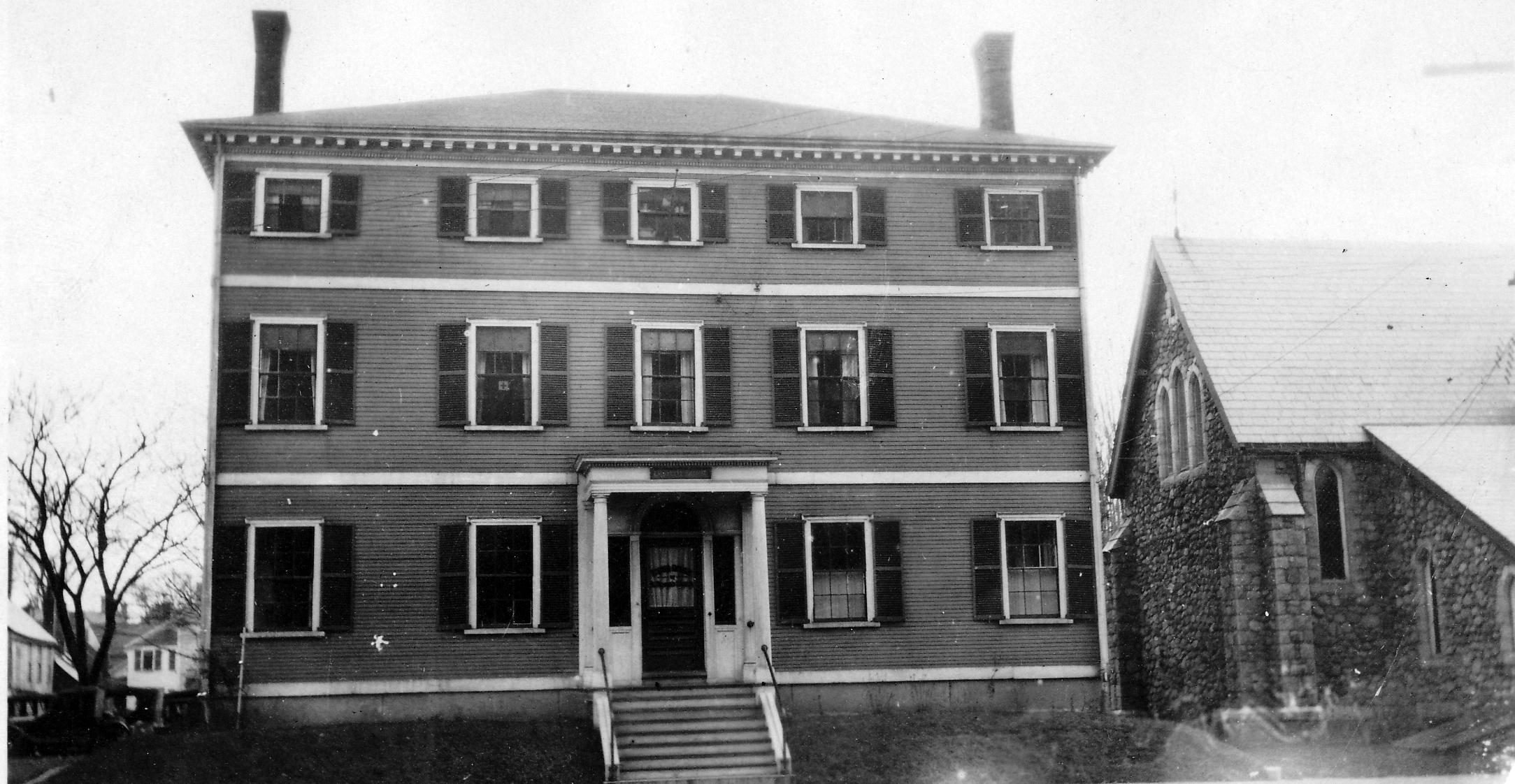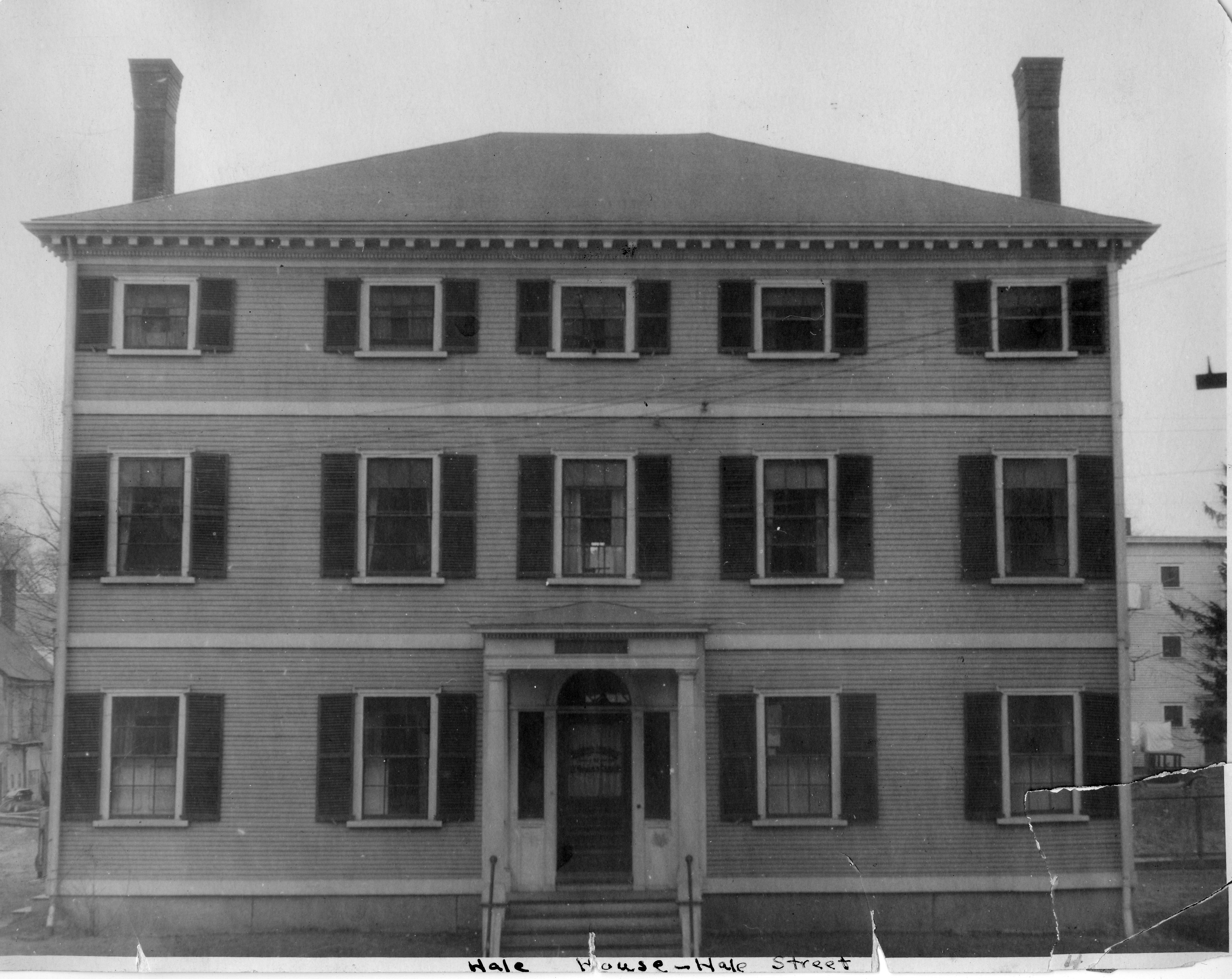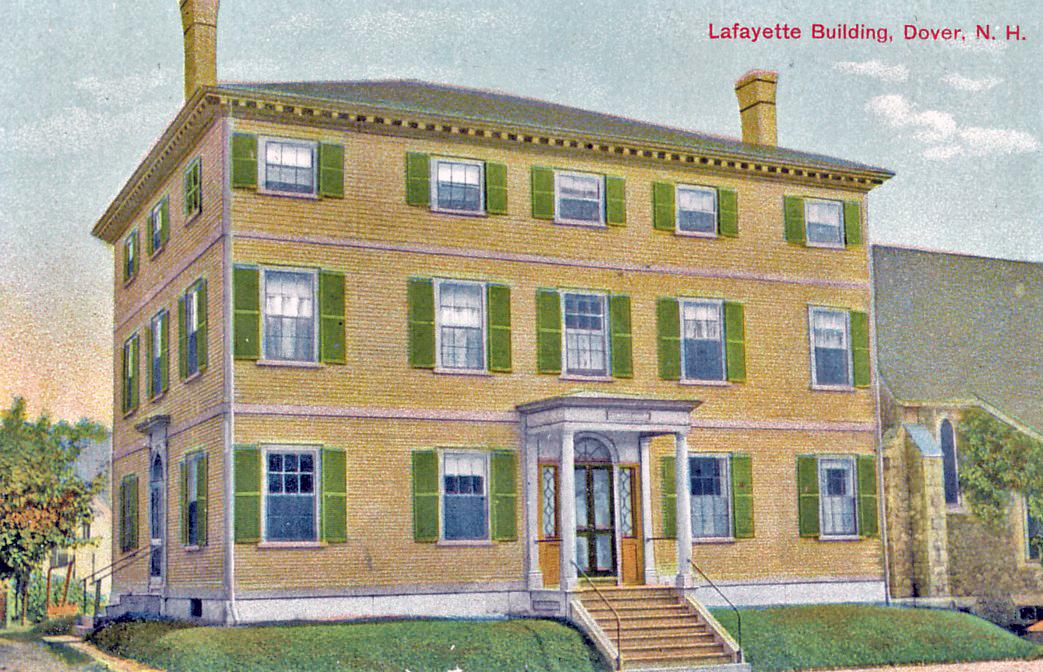Disclaimer
The Dover Public Library website offers public access to a wide range of information, including historical materials that are products of their particular times, and may contain values, language or stereotypes that would now be deemed insensitive, inappropriate or factually inaccurate. However, these records reflect the shared attitudes and values of the community from which they were collected and thus constitute an important social record.
The materials contained in the collection do not represent the opinions of the City of Dover, or the Dover Public Library.
William Hale House

5 Hale Street

The William Hale house (also known as the Lafayette House) was built in 1806 on the site of the present city hall. The William Hale house was moved next door to the St. Thomas Episcopal Church on Hale Street. It is also called Lafayette House in memory of Lafayette’s stay here during his visit to Dover. The house was built by George and Edward Pendexter and the exterior was a copy of the Edward Cutts house in Portsmouth. This is the oldest of the large Federal style houses in Dover. Mr. Hale was a prominent Dover business man and representative to the U.S. Congress for several years prior to 1816. As a result, he not only entertained General Lafayette and his son in 1825, but also President Monroe on his visit of 1817. St. Thomas Church bought the house for a Parish House in 1901. The house was named to the National Register of Historic Places in December 1980.
From the 1981 Heritage Walk Tour Booklet.

This historical essay is provided free to all readers as an educational service. It may not be reproduced on any website, list, bulletin board, or in print without the permission of the Dover Public Library. Links to the Dover Public Library homepage or a specific article's URL are permissible.
